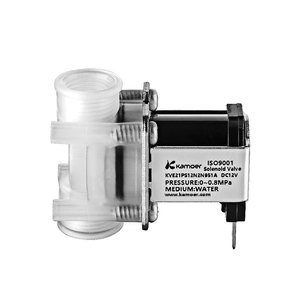
Large Diameter Pistons Are Designed To Be Sensitive To Pressure Control Solenoid Pressure Reducing Valve For Water





















A solenoid valve is an electrically controlled valve. A solenoid is an electric coil with a movable ferromagnetic core (plunger) at the center. While in the resting position, a plunger closes off a small orifice. An electric current then passes through the coil, creating a magnetic field. The magnetic field then exerts an upward force on the plunger, thereby opening the orifice. This is how an asco solenoid valve opens and closes. A water solenoid valve is used for liquid applications while a gas solenoid valve is used for gases. All of these valves are used to open, close, distribute or mix the required media with two or more inlets (or outlets). These valves are very fast acting and can be commonly found in heating systems, compressed air, vacuum, irrigation and car washes.